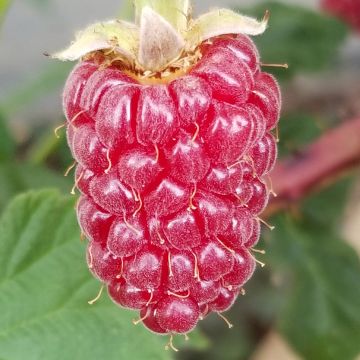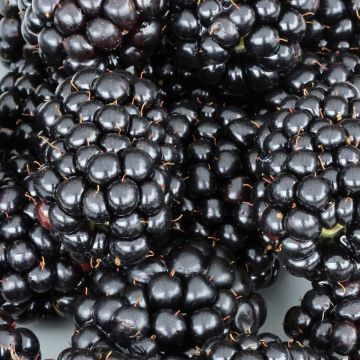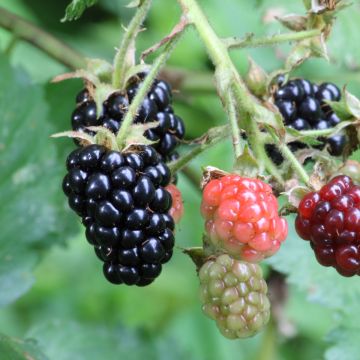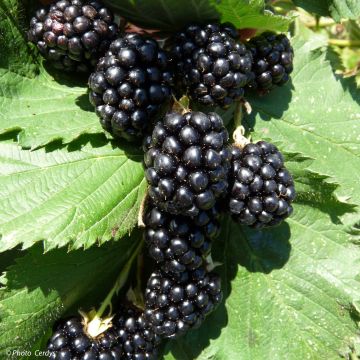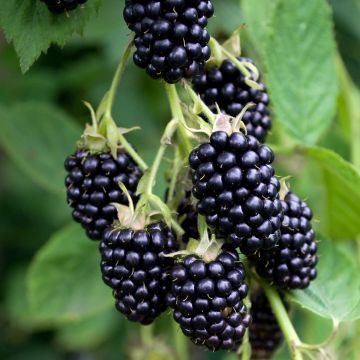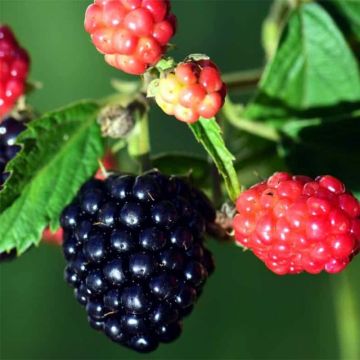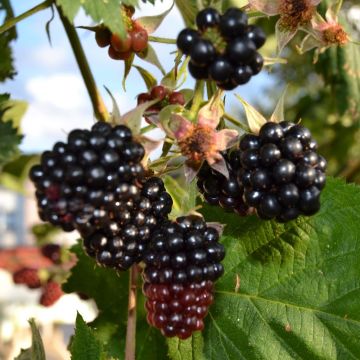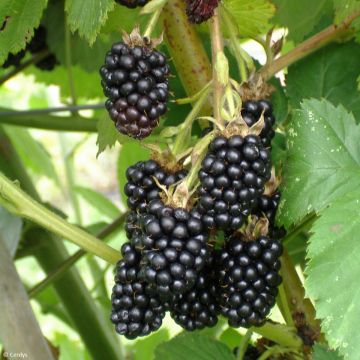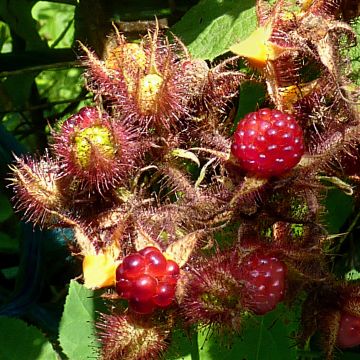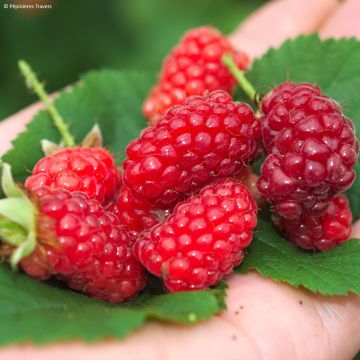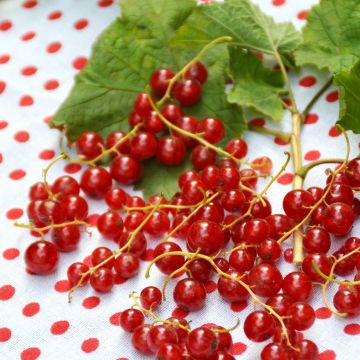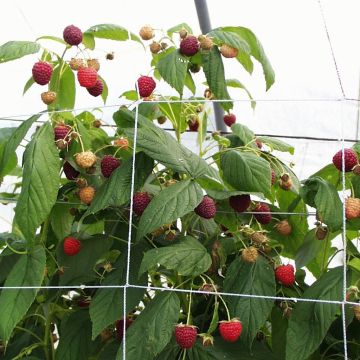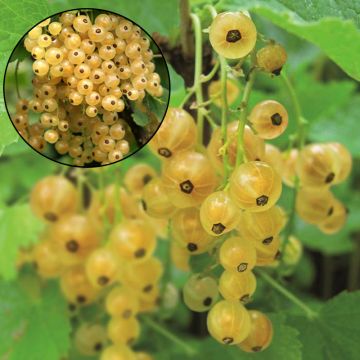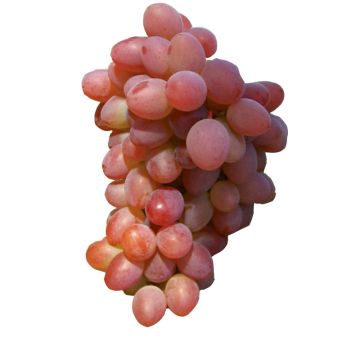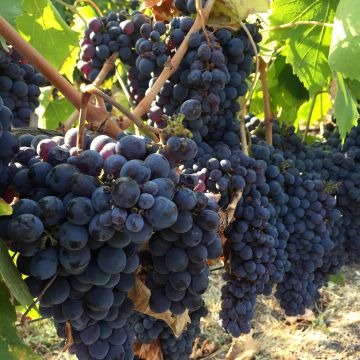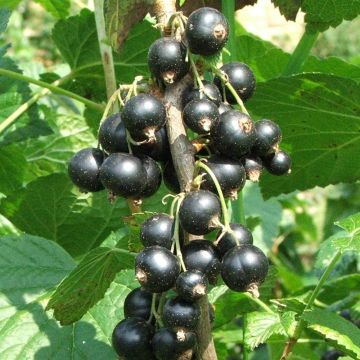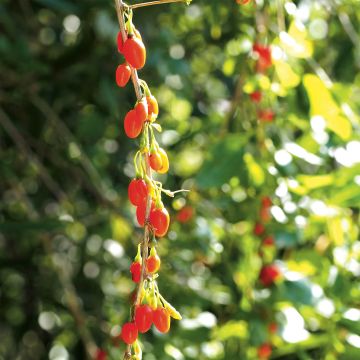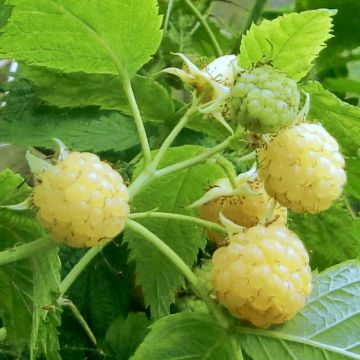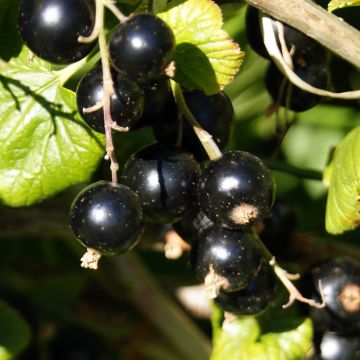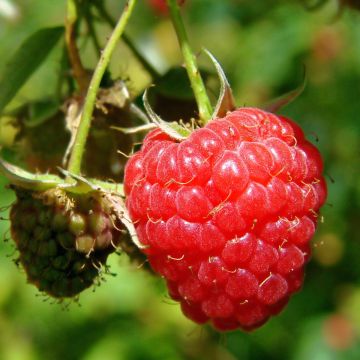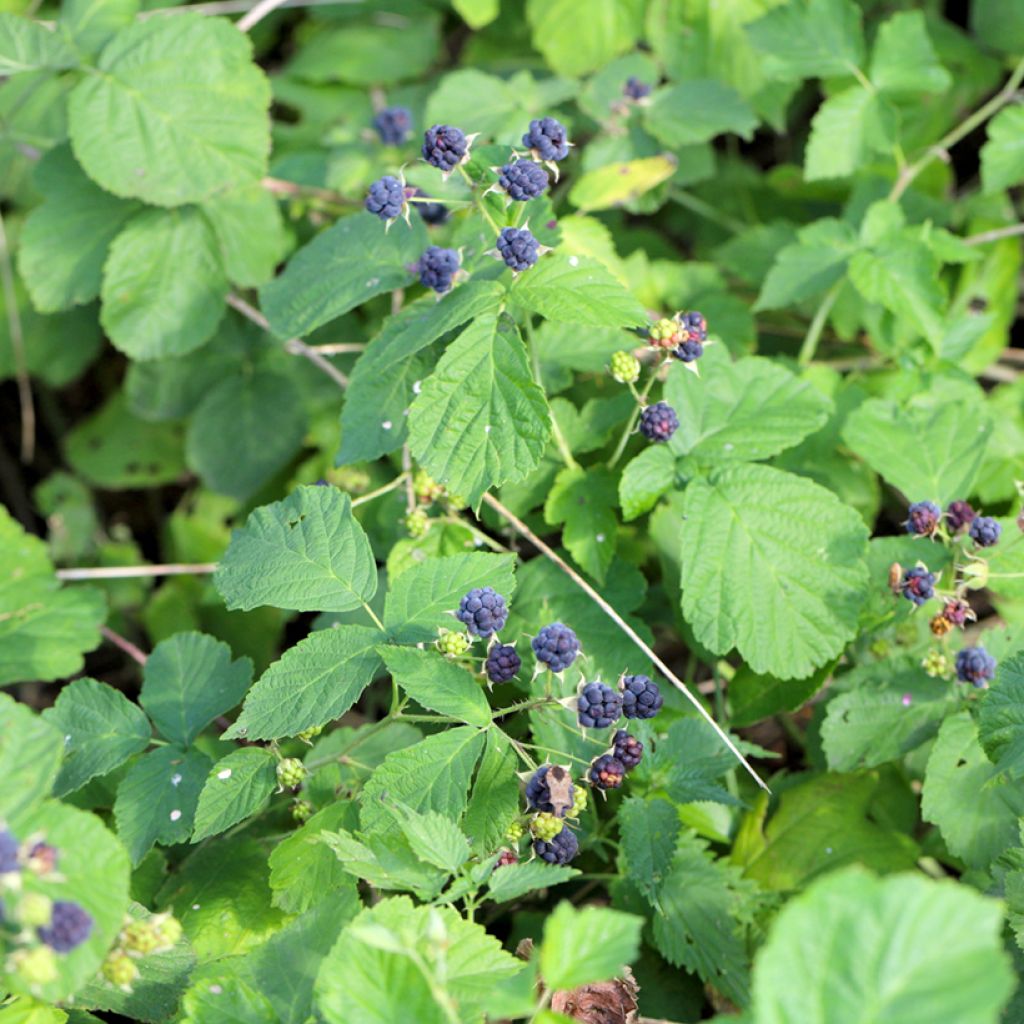

Rubus caesius - European dewberry
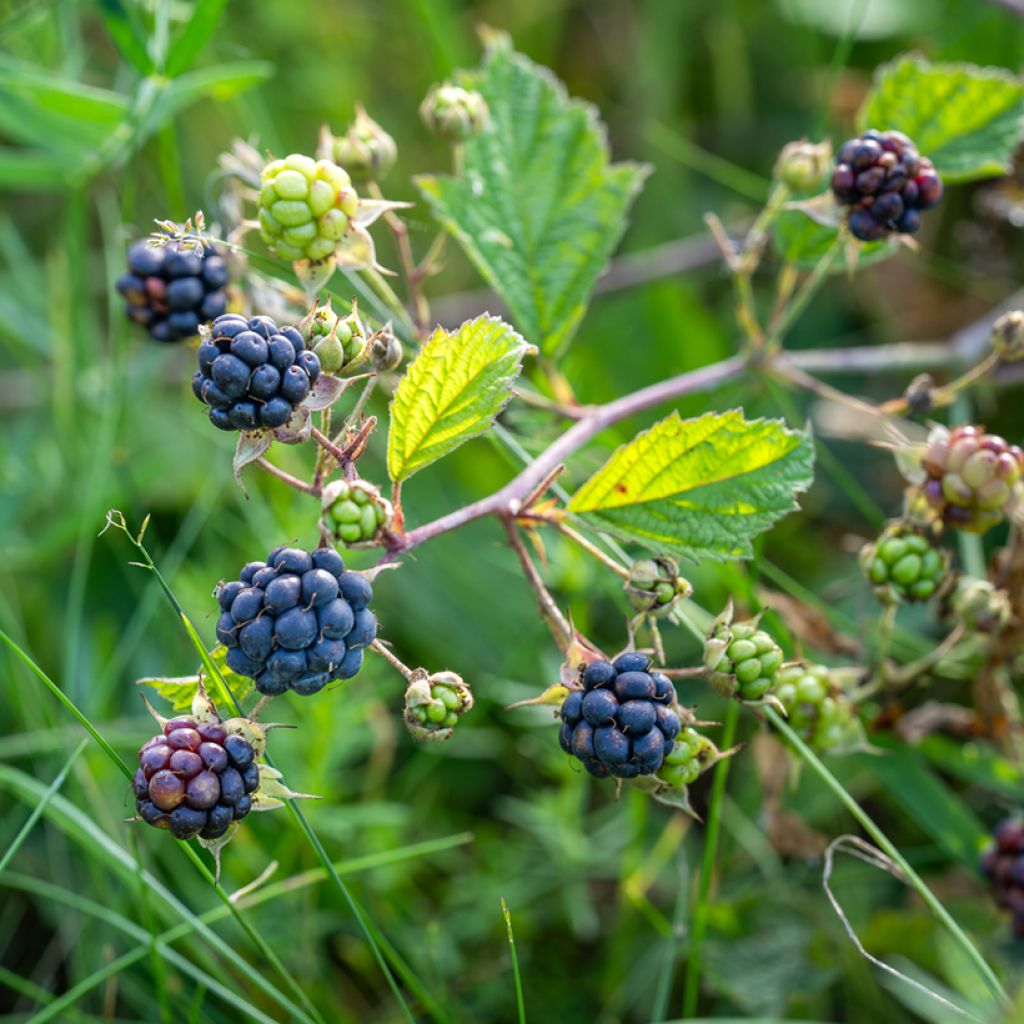

Rubus caesius - European dewberry
Rubus caesius - European dewberry
Rubus caesius
Dewberry, European dewberry.
This item cannot be shipped to the selected country
Delivery charge from €5.90
More information
Schedule delivery date,
and select date in basket
This plant carries a 6 months recovery warranty
More information
We guarantee the quality of our plants for a full growing cycle, and will replace at our expense any plant that fails to recover under normal climatic and planting conditions.
From €5.90 for pickup delivery and €6.90 for home delivery
Express home delivery from €8.90.
Description
Rubus caesius, known as dewberry, blue bramble, field bramble, small bramble or blueberry bramble, is an undershrub of the Rosaceae family, widespread in Europe and Northern Asia. Adapted to rich and moist soils, this hardy, honey-producing plant is recognisable by its white flowers followed by small chalky, dark blue fruits. Easygoing and low-maintenance, it finds its place in natural gardens, in a small hedge or the understory.
The dewberry is a species of the flora of Europe and northern Asia. It is commonly found in central Europe, in the Alps up to 1000 m altitude, in various habitats such as sparse riparian forests (vegetation growing along rivers and streams), forest edges, riverbanks, field edges, paths, ditches, among hedges and on rubble. Rubus caesius is a small shrub with long trailing arching branches, often creeping, which can reach a height of 50 cm to 1 m. Its cylindrical, bluish stems are covered with slender, almost straight prickles measuring from 2 to 5 mm long, capable of causing injuries. The deciduous leaves are arranged alternately on the branches. They are composed of three toothed, ovate to lanceolate and hairy leaflets. The upper surface is light green and smooth, while the underside is covered with a soft down. In autumn, the foliage turns yellow to orange before falling. The white, 3 cm wide flowers, grouped in small spiny corymbs, appear from May to September. The fruits are spherical chalky, bluish polydrupes. They are edible but not very tasty. This plant has an extensive and shallow root system. It grows in nutrient-rich, moist to wet soils, often limestone, loamy, and clayey.
The dewberry is a robust and hardy plant, interesting for creating natural hedges or feeding bees with its nectar-rich flowering. It also lends itself well to the design of large borders in wild gardens or semi-natural areas that are a bit neglected. This Rubus caesius can be planted with native species sharing the same preferences for rich and moist soils. Especially Black Elder (Sambucus nigra), Red Elder (Sambucus racemosa), Hazelnut (Corylus avellana), Hawthorn (Crataegus monogyna) and St. John's Wort (Hypericum perforatum). Together, these plants contribute to a diverse environment that is favourable to local wildlife while adding a natural touch to the garden.
Report an error about the product description
Plant habit
Fruit
Flowering
Foliage
Botanical data
Rubus
caesius
Rosaceae
Dewberry, European dewberry.
Rubus caesius var. turkestanicus
Central Europe
Other Blackberry bush
Planting and care
The blue bramble is a very hardy, robust and low-maintenance plant. It prefers deep, fertile, moist soils with a tendency towards limestone. Its only enemy is drought. This bramble bears fruit in the sun or partial shade, but its fruits are of poor taste quality. However, they are sought after by birds. It is best to plant this bramble in autumn, from October to December. Be warned that if you plant it in your garden and do not harvest all its fruits, birds will spread its seeds everywhere.
Dig a hole twice as big as the root system. Scratch the root ball with a slightly sharp tool to loosen the root cluster and promote growth. Place the bush in the hole without burying it too deep. Water thoroughly to compact the soil and remove air around the roots. It is important to ensure that the plant does not lack water, especially in the first year after planting. Afterwards, watering will only be necessary in case of a dry summer.
Planting period
Intended location
Care
This item has not been reviewed yet - be the first to leave a review about it.
Berries
Haven't found what you were looking for?
Hardiness is the lowest winter temperature a plant can endure without suffering serious damage or even dying. However, hardiness is affected by location (a sheltered area, such as a patio), protection (winter cover) and soil type (hardiness is improved by well-drained soil).

Photo Sharing Terms & Conditions
In order to encourage gardeners to interact and share their experiences, Promesse de fleurs offers various media enabling content to be uploaded onto its Site - in particular via the ‘Photo sharing’ module.
The User agrees to refrain from:
- Posting any content that is illegal, prejudicial, insulting, racist, inciteful to hatred, revisionist, contrary to public decency, that infringes on privacy or on the privacy rights of third parties, in particular the publicity rights of persons and goods, intellectual property rights, or the right to privacy.
- Submitting content on behalf of a third party;
- Impersonate the identity of a third party and/or publish any personal information about a third party;
In general, the User undertakes to refrain from any unethical behaviour.
All Content (in particular text, comments, files, images, photos, videos, creative works, etc.), which may be subject to property or intellectual property rights, image or other private rights, shall remain the property of the User, subject to the limited rights granted by the terms of the licence granted by Promesse de fleurs as stated below. Users are at liberty to publish or not to publish such Content on the Site, notably via the ‘Photo Sharing’ facility, and accept that this Content shall be made public and freely accessible, notably on the Internet.
Users further acknowledge, undertake to have ,and guarantee that they hold all necessary rights and permissions to publish such material on the Site, in particular with regard to the legislation in force pertaining to any privacy, property, intellectual property, image, or contractual rights, or rights of any other nature. By publishing such Content on the Site, Users acknowledge accepting full liability as publishers of the Content within the meaning of the law, and grant Promesse de fleurs, free of charge, an inclusive, worldwide licence for the said Content for the entire duration of its publication, including all reproduction, representation, up/downloading, displaying, performing, transmission, and storage rights.
Users also grant permission for their name to be linked to the Content and accept that this link may not always be made available.
By engaging in posting material, Users consent to their Content becoming automatically accessible on the Internet, in particular on other sites and/or blogs and/or web pages of the Promesse de fleurs site, including in particular social pages and the Promesse de fleurs catalogue.
Users may secure the removal of entrusted content free of charge by issuing a simple request via our contact form.
The flowering period indicated on our website applies to countries and regions located in USDA zone 8 (France, the United Kingdom, Ireland, the Netherlands, etc.)
It will vary according to where you live:
- In zones 9 to 10 (Italy, Spain, Greece, etc.), flowering will occur about 2 to 4 weeks earlier.
- In zones 6 to 7 (Germany, Poland, Slovenia, and lower mountainous regions), flowering will be delayed by 2 to 3 weeks.
- In zone 5 (Central Europe, Scandinavia), blooming will be delayed by 3 to 5 weeks.
In temperate climates, pruning of spring-flowering shrubs (forsythia, spireas, etc.) should be done just after flowering.
Pruning of summer-flowering shrubs (Indian Lilac, Perovskia, etc.) can be done in winter or spring.
In cold regions as well as with frost-sensitive plants, avoid pruning too early when severe frosts may still occur.
The planting period indicated on our website applies to countries and regions located in USDA zone 8 (France, United Kingdom, Ireland, Netherlands).
It will vary according to where you live:
- In Mediterranean zones (Marseille, Madrid, Milan, etc.), autumn and winter are the best planting periods.
- In continental zones (Strasbourg, Munich, Vienna, etc.), delay planting by 2 to 3 weeks in spring and bring it forward by 2 to 4 weeks in autumn.
- In mountainous regions (the Alps, Pyrenees, Carpathians, etc.), it is best to plant in late spring (May-June) or late summer (August-September).
The harvesting period indicated on our website applies to countries and regions in USDA zone 8 (France, England, Ireland, the Netherlands).
In colder areas (Scandinavia, Poland, Austria...) fruit and vegetable harvests are likely to be delayed by 3-4 weeks.
In warmer areas (Italy, Spain, Greece, etc.), harvesting will probably take place earlier, depending on weather conditions.
The sowing periods indicated on our website apply to countries and regions within USDA Zone 8 (France, UK, Ireland, Netherlands).
In colder areas (Scandinavia, Poland, Austria...), delay any outdoor sowing by 3-4 weeks, or sow under glass.
In warmer climes (Italy, Spain, Greece, etc.), bring outdoor sowing forward by a few weeks.

































